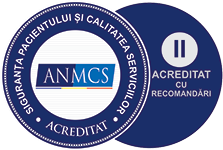Cardiovascular diseases can often have reduced manifestations in the early stages and a simple specialist consultation can lead to diagnosis and treatment.
Arterial hypertension
Hypertension, although it has no symptoms, can cause serious complications. Diagnosed simply by measuring blood pressure, and treated early, it can save lives.
Acute myocardial infarction
Acute myocardial infarction can sometimes manifest itself in prolonged abdominal pain, a symptom specific to digestive diseases. A simple electrocardiogram can elucidate this.
Reducing cardiovascular risk
A diet rich in fruit, vegetables, fish and olive oil significantly reduces cardiovascular risk.
ECG monitoring
A feeling of dizziness, or even fainting, can be caused by the heart beating too slowly and is seen on the same investigation.
Heart palpitations
Heart palpitations, sometimes intermittent, can be diagnosed by monitoring the ECG for 24 hours by fitting an ECG Holter, without affecting your daily activity.
EKG Holter Monitoring
Ambulatory (24-hour) heart rate monitoring – EKG allows 24-hour heart rate recording, giving the doctor information about the patient’s heart function throughout a normal working day. This captures both the patient’s quieter and more stressful moments. This recording is done by electrodes mounted on the patient’s body, which are connected to a recorder attached to the belt.
The patient must come to the clinic for the holter fitting and return the next day for the disassembly and interpretation of the information by the cardiologist. its.
Electrodes are attached to the patient’s body and connected to a small device that is worn around the waist.
Indications
Recommended for
- diagnosis and assessment of the severity of cardiac arrhythmias and conduction disorders. Arrhythmias and conduction disturbances may be permanent and will then be detected with a regular electrocardiogram. When these disturbances are intermittent, they are not captured during an electrocardiogram, but Holter monitoring can reveal them.
- in case of symptoms of palpitations and loss of consciousness (syncope).
- in the absence of symptoms, in certain diseases with an increased risk of arrhythmias or to assess the effectiveness of antiarrhythmic treatment.
- diagnosis of silent ischaemia – ischaemia that produces electrocardiographic changes but is not accompanied by pain.
Ambulatory monitoring (24 hours) BP – consists of 24-hour recording of blood pressure.





 Română
Română English
English